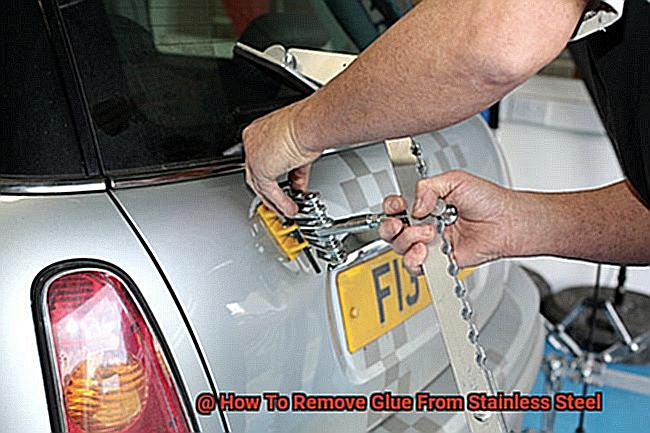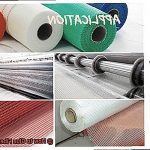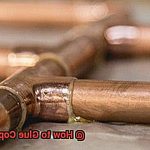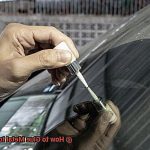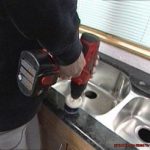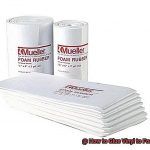Are you struggling with glue on your stainless steel surfaces?
Don’t worry – we have the perfect solution. Removing glue from stainless steel can be tricky, but it is possible if you know the right tools and techniques.
In this blog post, we’ll explore how to remove glue from stainless steel and provide some helpful tips. Because of its smooth surface, getting rid of glue on stainless steel can be a challenge.
However, there are several solutions that can help you effectively remove the adhesive without damaging it. For example, you may use a combination of heat and chemical solvents.
Heat helps loosen the adhesive so that it can be scraped off more easily, while chemical solvents break down both the glue and metal surface. Additionally, certain types of adhesives may require special equipment or tools in order to eliminate them completely.
Another popular way to remove glue from stainless steel is with an ice cube. This process works by freezing the adhesive so that it becomes brittle and easier to scrape away.
Just remember – this technique should only be used on small areas as larger surfaces may be damaged due to thermal shock. Finally, if all else fails, there are commercial products designed specifically for removing adhesives from stainless steel surfaces.
Removing glue from stainless steel doesn’t have to be hard – with these simple tips and tricks, you’ll have your floors clean and free of adhesive residue in no time.
What is Stainless Steel?
Contents
- 1 What is Stainless Steel?
- 2 How to Remove Glue from Stainless Steel using Warm Water and Dish Soap
- 3 How to Remove Glue from Stainless Steel using Rubbing Alcohol or Acetone
- 4 How to Remove Glue from Stainless Steel using Goo Gone
- 5 How to Remove Glue from Stainless Steel using White Vinegar
- 6 Tips for Removing Glue from Stainless Steel
- 7 Common Mistakes when Removing Glue From Stainless Steel
- 8 Conclusion
Stainless steel is a popular and resilient material used in a variety of industries, from medical equipment to kitchen appliances.
Its unique properties, such as corrosion resistance and shine, make it an attractive choice for many household and commercial uses. However, even stainless steel can succumb to wear and tear, with glue and adhesive residues building up on its surfaces over time.
Fortunately, there are several ways to restore your stainless steel surfaces to their original luster. Warm water and dish soap can be used for light glue stains, while rubbing alcohol or acetone can be used for tougher stains.
How to Remove Glue from Stainless Steel using Warm Water and Dish Soap
Removing glue from stainless steel surfaces can be a tricky task, but with the right materials and techniques, you can easily restore your stainless steel appliances, sinks, and utensils to their original shiny condition. The key is to use warm water and dish soap – it’s like a magic potion that will make your stainless steel surfaces appear brand new.
Here’s an easy step-by-step guide on how to remove glue from stainless steel using warm water and dish soap:
Step 1: Fill a basin or sink with warm water and add a few drops of dish soap. This combination results in a fast cleaning agent that will remove the glue residue without damaging the stainless steel’s finish.
Step 2: Soak a sponge or cloth in the solution and wring out the excess water. To allow the glue residue time to work its magic, place the damp cloth over the glue residue for ten minutes.
Step 3: Gently scrub the area with circular movements until all of the glue is gone. To help remove stubborn buildup, use a plastic scraper or spatula as needed.
Step 4: With clean water and a soft cloth, rinse any remaining soap residue. Dry the stainless steel surface with a clean cloth to prevent water spots.
How to Remove Glue from Stainless Steel using Rubbing Alcohol or Acetone
Removing glue from stainless steel can be a tricky task, but with the right tools and techniques, it can be done quickly and effectively. Whether you’re dealing with sticker residue on your fridge or stubborn adhesive on your sink, rubbing alcohol or acetone can be an excellent choice for removing glue from stainless steel.
Rubbing alcohol is a readily available solvent that dissolves adhesives and makes it possible to remove glue from stainless steel surfaces. To use it, saturate a clean cloth in rubbing alcohol and then rub the affected area gently until the glue loosens up. Acetone is another safe alternative for removing glue from stainless steel. Simply dab it onto the area with a cotton ball or soft cloth and let it sit for a few minutes before wiping it off with a fresh cloth.
When using either of these solvents, it’s important to remember that they are flammable and should be handled with care. Keep them away from open flames or heat sources when applying them to the surface, and always wear protective gloves to avoid skin irritation or exposure to harmful fumes. Additionally, test a small area first to ensure that the solvent does not cause any discoloration or harm to the stainless steel.
Using Rubbing Alcohol on Stainless Steel
To use rubbing alcohol on stainless steel surfaces, saturate a cotton ball in rubbing alcohol and then apply it to the area with glue residue. Let it sit for a few minutes before gently rubbing the area with a soft cloth or sponge until all of the glue has been removed. Repeat this process if necessary until all of the glue has been removed from the surface of the stainless steel.
Using Acetone on Stainless Steel
To use acetone on stainless steel surfaces, apply it directly onto the affected area using a cotton ball or soft cloth. Let it sit for several minutes before wiping off any excess residue with a clean cloth until all of the glue has been removed from the surface of the stainless steel completely.
How to Remove Glue from Stainless Steel using Goo Gone
Introduction: Removing glue from stainless steel can be a difficult task, but it doesn’t have to be with the right product and techniques. Goo Gone is an effective adhesive remover that can efficiently dissolve and remove even the toughest adhesives from stainless steel surfaces without causing any damage.
Using Goo Gone
To ensure that it does not cause any harm, first test a small amount of Goo Gone on a small, inconspicuous area of the stainless steel to ensure it won’t cause any damage. Then, rub the affected area in a circular motion using a clean, dry cloth or sponge.
Allow the Goo Gone to penetrate and dissolve the glue before using a scraper or other flat tool to gently scrape off the softened glue. Repeat this process as necessary until all of the glue residue is removed. To remove any remaining Goo Gone residue, wash the area thoroughly with warm water and soap.
Safety Precautions
It is important to note that Goo Gone is a powerful solvent, so use it with caution. Be sure not to use excessive pressure when rubbing as this may result in scratches or other damage to the stainless steel surface, and avoid contact with any plastic or painted surfaces nearby as Goo Gone can do damage to them as well.
Additionally, wear a mask when using Goo Gone due to its strong odor, and make sure to thoroughly clean the stainless steel surface with soap and water after using it to remove any chemical residue.
How to Remove Glue from Stainless Steel using White Vinegar
Removing glue from stainless steel surfaces can be a daunting task, but with the help of white vinegar, you can get your appliances and utensils looking like new again. White vinegar contains acetic acid, which breaks down adhesive properties in the glue, making it easier to remove. Here’s how to use white vinegar to remove glue from stainless steel:
Gather Supplies
Before starting the process, make sure you have all the necessary supplies on hand. You’ll need white vinegar, a clean cloth, and a soft-bristled brush.
Soak Cloth in White Vinegar
Soak your cloth in undiluted white vinegar and place it over the glue residue for at least 30 minutes. This will allow the acetic acid time to break down the adhesive properties of the glue so that it can be more easily removed. Make sure you coat the entire area with vinegar and let it sit for at least 30 minutes before going to the next step.

Scrub Away Glue Residue
After 30 minutes have passed, rinse off your cloth and use a soft-bristled brush to gently scrub away any remaining glue residue from your stainless steel surface. Be sure not to use any abrasive products as they can cause scratches and harm to your appliances or utensils. If there is still some stubborn material after scrubbing, repeat steps 3 and 4 until all of the glue is gone.
Rinse and Dry Surface: Once all of the glue has been removed, rinse off your stainless steel surface with water and dry it with a clean towel or cloth. This will ensure that there is no remaining vinegar on the surface, which may lead to discoloration or other damage if left untreated. Congratulations. You have successfully removed all of the pesky glue from your stainless steel surfaces.
xIEcdSG77os” >
Tips for Removing Glue from Stainless Steel
Stainless steel is a common material used in many household items, from appliances to sinks and utensils. Unfortunately, glue and adhesive residues can quickly adhere to these surfaces, making them look dull and dingy.
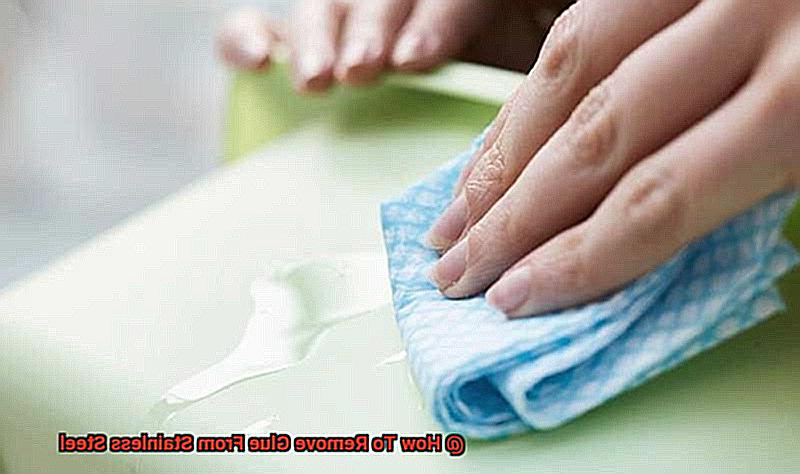
But don’t worry, there are several tips and techniques that can help you restore your stainless steel back to its original shine. Here are seven tips for removing glue from stainless steel:
Scrape it off
To safely remove the glue, use a plastic scraper or razor blade. Be careful not to scratch the surface of the stainless steel while scraping.
Use solvents
To dissolve the glue, try rubbing alcohol, nail polish remover, or adhesive remover. Before applying any solvent to the affected area, be sure to test it on a small patch first.
Try baking soda
Create a paste with baking soda and water and apply it to the glue. Let it sit for several minutes before wiping away with a damp cloth.
Use commercial cleaners
Utilize commercial stainless steel cleaners following the manufacturer’s instructions closely. As some cleaners can damage the finish of stainless steel, be sure to try it on an inconspicuous area first before applying it over a larger area.
Heat gun or hair dryer
If all else fails, use a heat gun or hair dryer to soften the glue before scraping it off with a plastic scraper.
Goo Gone
Goo Gone is another popular adhesive remover that can work on stainless steel surfaces; however, be sure to read the label and test a small area first before using it over larger areas.
Professional assistance
If all else fails, consider seeking professional help from an appliance repair technician or cleaning service who has expertise in removing adhesive residue from stainless steel surfaces safely and effectively without damaging them further.
Common Mistakes when Removing Glue From Stainless Steel
Removing glue from stainless steel can be a tricky task, but with the right approach and knowledge, it’s possible to do it without damaging the surface.
Here are some of the most common mistakes people make when trying to remove glue from stainless steel: Using abrasive materials or tools such as steel wool or metal scrapers is a big no-no.
Not only will they scratch and damage the stainless steel, leaving it vulnerable to rust and discoloration, but they can also cause permanent damage. Another mistake is using harsh chemical cleaners without properly diluting them first.
This can strip away the protective coating on the stainless steel, leaving it dull and prone to corrosion. Heat should also be used with caution; excessive heat can cause warping or discoloration of the stainless steel surface.
To avoid these mistakes and successfully remove glue from stainless steel, patience and diligence are key – it may take several attempts before you get a successful result.
Also Read: How to Glue Stainless Steel to Drywall? – Glue Things
Conclusion
Removing glue from stainless steel can be a tricky task.
But with the right tools and techniques, you can easily restore your stainless steel appliances, sinks, and utensils to their original shine. Warm water and dish soap can help light glue stains, while rubbing alcohol or acetone are effective for tougher ones.
Goo Gone is also great for removing adhesive residue. However, it’s important to note that these solvents are flammable and must be handled with care.
Wear protective gloves to avoid skin irritation or exposure to harmful fumes. Test a small area first to make sure the solvent won’t cause any discoloration or harm to the stainless steel.
And never use abrasive materials or equipment as they can cause permanent damage.

